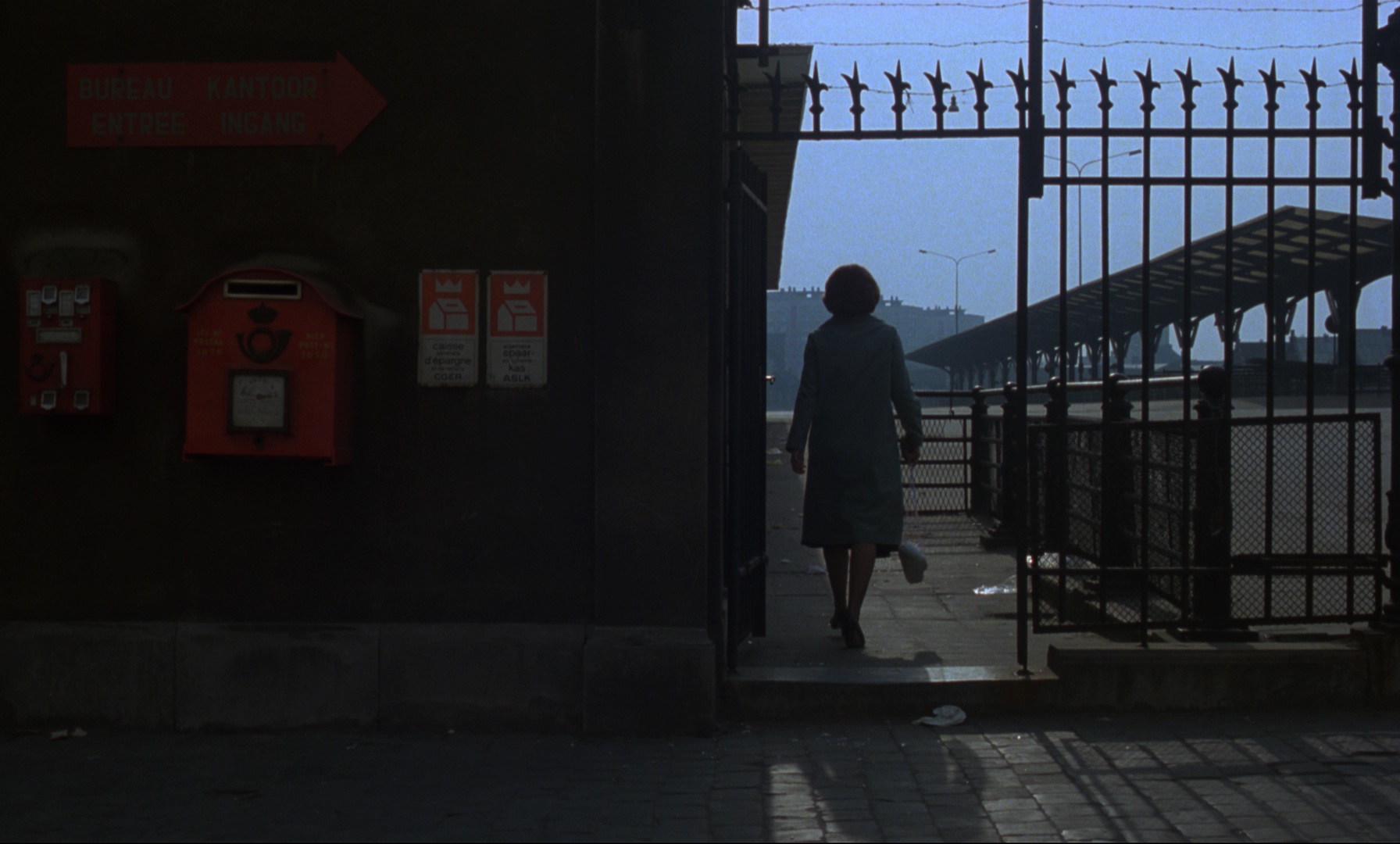March 24, 2024
Jeanne Dielman, 23 quai du Commerce, 1080 Bruxelles (1975)

Few films have had more written, thought and said about them than Jeanne Dielman, 23 quai du Commerce, 1080 Bruxelles (1975), made by Chantal Akerman when she was only twenty-four years old. Since the film reached number one in the decennial Sight & Sound list of the best films of all time, it has been ubiquitous. Jeanne Dielman is a must-see film. A “masterpiece,” an absolute milestone in film history. I myself have never seen Jeanne Dielman. Writing out the words almost feels like an admission, a confession. A screening was scheduled for Sunday March 24 at CINEMATEK as part of the big Akerman retrospective. Yet I hesitated until the last moment to actually go see the film.
Why did I never see the film? Or rather, why did I never find the right time to go see the film? My mother once told me that when she was fourteen, she saw Jeanne Dielman with her grandmother. Two different generations watched more than three hours of Jeanne Dielman’s daily routine together. For my mother, seeing Jeanne Dielman was an important moment. She recognised in the way Akerman directed the actress Delphine Seyrig, for example had her peel potatoes, an artistic gesture that made her decide to study at an art school herself. Her grandmother, on the other hand, had been bored for hours, shuffling uncomfortably in her chair. Serge Daney, in his cinephile “autobiography” Perseverance, following a quote by Jean-Louis Schefer, speaks of “films that have watched our childhood.” Films that are so important that they become an essential part of your life because they “seem to know” something about you, something you find difficult to put into words. The film “walks out of the cinema with you,” so to speak. In the same text, Daney talks about Kapo, a film he himself had never seen. “For I haven’t seen Kapo and at the same time I have seen it,” he writes.1 “I have seen it because someone has shown it to me – with words.” That writer was Jacques Rivette, and he used the film to describe an ethical imperative that would stay with Daney forever. Kapo’s tracking shot, the infamous camera movement during a death scene of a prisoner in a concentration camp, would be a sign of the abject in film throughout Daney’s life.
In a not very different way, Jeanne Dielman also consists mainly of words for me. My very first encounter with Chantal Akerman’s cinema was not Jeanne Dielman, like my mother, but Saute ma ville. In my first year at film school, at the age of twenty-three. Saute ma ville was a revelation because it escaped any categorisation and gave me the reassurance that unruliness – Akerman’s youthful anarchy – could be decisive in filmmaking. At school, Jeanne Dielman was never shown to us in full, but the film was gradually pieced together with teaching materials, texts and fragments. It made a much stronger impression from those snippets, hence a growing reluctance to watch the film completely. Perhaps this monumental work, viewed, discussed and read so many times in different ways, would compromise my growing affection for Akerman’s other films. On many levels, the way Jeanne Dielman is described is a collection of clichés. Clichés that have become firmly associated with the description of Akerman’s cinema as a whole. A “tedious,” “slow,” “concentrated,” “hyper-realistic” film about a “housewife” / “prostitute” living a routine life. It is supposedly a “difficult” and “boring” film that requires effort.
Jeanne Dielman’s place in film history has, you might say, always been uneasy. The film has always been stuck between very positive critique and misunderstanding, even disdain. First forgotten, now praised immensely. Few filmmakers have been driven into the defensive as Chantal Akerman. As she herself pointed out in an interview, the film often became what people wanted to see in it, while for her Jeanne Dielman remained an ode to her mother’s daily gestures and actions.2 It’s perhaps a strange fate that with films like Jeanne Dielman you can never be in the cinema haphazardly, without predetermination. The experience of a film can be hijacked by the plethora of meanings and interpretations, or jeopardise your receptivity to it. Yet here I also distrust my own stubbornness. Shouldn’t I trust that Jeanne Dielman just retains the ability to break through that fog? A film can, despite oneself, always “look back” unexpectedly. I stayed home that Sunday afternoon anyway.
- 1Serge Daney, “The Tracking Shot in Kapo,” Senses of Cinema, February 2004. This article was first published in Trafic 4 (Paris: P.O.L. Editions, 1992). It was later republished in Perséverance: Entretien avec Serge Toubiana (Paris: P.O.L. Editions, 1994). Translation by Laurent Kretzschmar.
- 2Scott MacDonald, A Critical Cinema 5: Interviews with Independent Filmmakers (Oakland: University of California Press, 2006), 260.
Images from Jeanne Dielman, 23 quai du commerce, 1080 Bruxelles (Chantal Akerman, 1975)
Many thanks to the Fondation Chantal Akerman.

